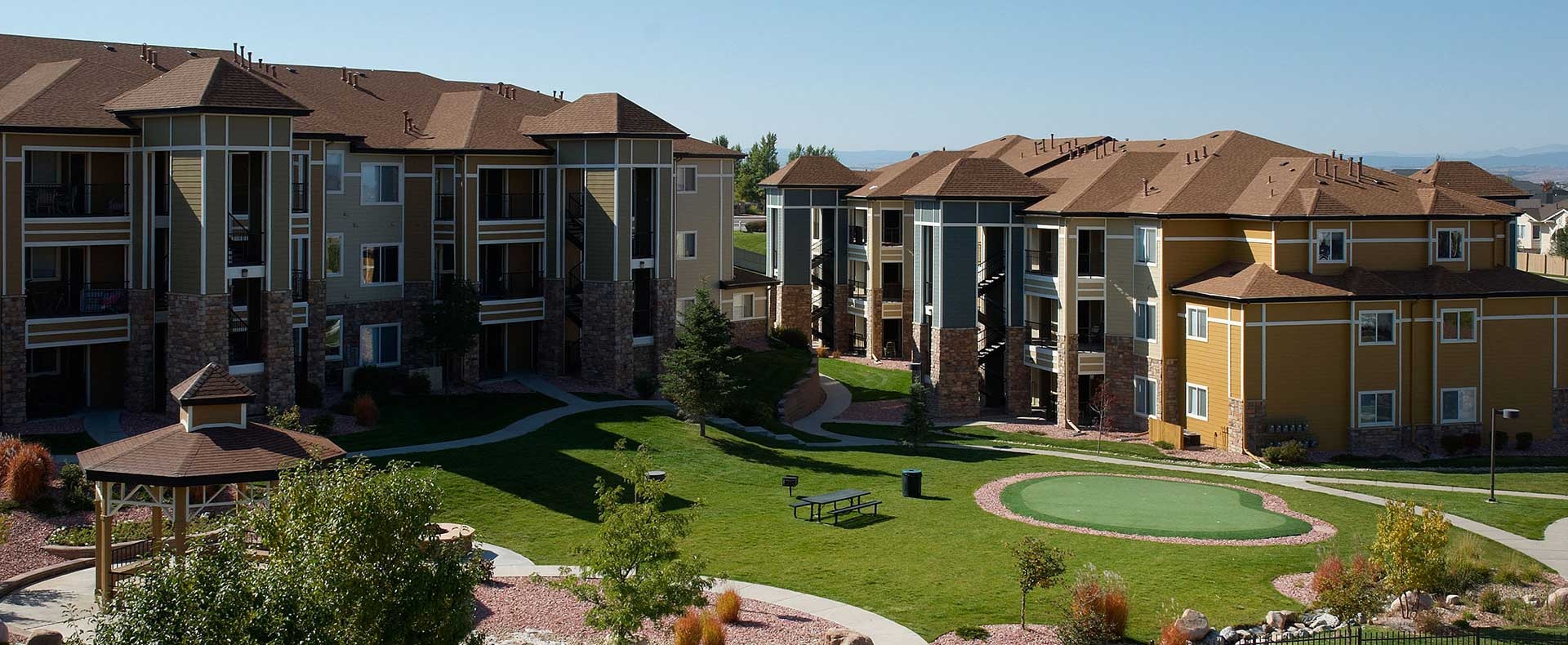So… You’re looking for an excellent side hustle and you want to invest in real estate, but do not have the time, energy or knowledge. You have heard that investing in multifamily rentals can be lucrative, if you only had the know-how and a huge down payment. You don’t relish the thought of taking time out of your day to manage people or tenants on top of that really good job you have now, but want to protect your savings without investing it into an unpredictable and uncontrollable stock market. You dislike the necessity of responding 24/7 to maintenance requests, and you cannot get approved for a $7,000,000 mortgage. You want to try your hand at investing but do not really know where to start.
Is there a way?
Yes… And you are not alone. Actively Passive is entirely devoted to helping you with just that. I will do my best to coach you along the way, and teach you what I have learned, so that together, we can become successful at our side hustles. Believe it or not, regular people like you and me are an integral part of the real estate investment economy. We have accumulated some substantial savings through hard work and dedication to our jobs and do not want to lose any of it. We are always looking at ways to keep our money working for us efficiently and safely. Investing in real estate is just one way that can help us preserve our wealth.
There are many websites, blogs, online courses, and books out there that can teach you how to buy a residential property and rent it out. Most of these resources are all about the active participation in the management of those properties, but there isn’t a lot out there to help keep those investments as passive as possible. I want to change that. I’m glad that you are reading this and are willing to go on this journey together. My goal is to teach you how to invest in multifamily syndications. This is one of the most passive types of investments I know of, but like anything good in life, it will mean learning a few new things.
Caveat: I am not a financial planner, lawyer or tax accountant, nor play any of these roles on TV. Please check with your financial consultant before making any monetary decisions.
A friend of mine, Derek M. Clifford, wrote a book that addresses the subject of a side hustle, and it is a really good read in my opinion. It is called Part-time Real Estate Investing for Full-time Professionals: Upgrade your mindset, portfolio and finances in less than a year while working. This book talks about the many ways to invest in real estate as a working professional, including active as well as passive ways to invest.
Multifamily Syndication – What is it? The Ultimate Side Hustle
Generally speaking, real estate syndication is a process for people to pool their monetary resources, organized by a syndicator or sponsor, in order to invest in properties and projects that are much larger than they could manage on their own. The syndicator and team, also known as the general partner, will usually form 2 LLCs: one to hold title to a property, and another to manage it. As a limited partner, an investor in a syndication buys shares of the managing LLC. This is a passive position since the limited partners do not manage the property – the general partner does. The sponsor does all the work. As an investor, all that is required of you is to help fund the deal, and in return for this, you should expect to receive periodic participation in the cash flow and profits.
The sponsor of the offering finds the property, raises funds from investors, acquires the property, manages the day-to-day operations of the project, and usually follows a 3-7-year business plan, selling the property at the end. The sponsor is typically rewarded with 10%-25% of the project’s equity and positive cash flow, while you get the remaining 75% to 90%. The percentages depend on the structure of the offering and are stated up front.
What returns should I expect?
When I look at a project, I want to see that I will have the ability to double my investment in 5-7 years. This should happen through a combination of quarterly (or monthly) distributions, and by participating in the upside presented by the appreciation of the property when it sells. I do not look for cash flow within the first year, because all available cash in a project needs to be plowed into renovations and business improvements during that time. This is what gets a project off the ground and makes it possible to force appreciation. So, boiling everything down to the numbers, what does a good investment look like? Look for clues like these:
- Holding Period: 6 Years
- Equity Multiple: 1.95x
- Cash-on-Cash Return*: 9.1%
- Average Annual Return**: 16.5%
- IRR: 15.3%
*When calculated without the sale proceeds.
**When calculated with the sale proceeds.
What is so great about investing in syndications?
Economies of scale – I would love to see an actual study on this, but I believe that the sweet spot in a multifamily investment is around 150+ units, and that there could be diminishing returns on effort and resources as the properties get bigger. This is the point where a syndication team can justify the many salaries (head count) needed to run a property. It is I the Goldilocks zone – not too big, not too small. There should be full-time property managers and maintenance people, as well as accounting and marketing staff. Where all these costs might contribute to 50% of revenues going toward expenses, when compared to a smaller property like a 50-unit community where the costs might be 60% or more, it just makes sense.
Recession resistant – People need to have a place to sleep, so there is always going to be some level of demand for rental units. Multifamily properties tend to be more cost efficient than single-family homes, and since there are multiple income streams from tenants living in a single apartment community, a few vacancies do not cause a sharp drop in income as compared to single-family rentals. In the past, as home process skyrocketed and became less affordable, people moved into multifamily properties, widening the pool of applicants as well as demand. As we saw in 2020, the demand for commercial real estate, like office space and retail, plummeted. But not multifamily real estate.
Diversification – Investing in many syndications is a relatively easy way to diversify your portfolio, spreading the risks over many properties, many geographic areas, and even many syndicators. You don’t always have extra-high minimum investments, as $25,000 could be all that some syndicators are asking for. Further, if you are investing through a crowdfunding platform, there might be minimums as low as $1,000, allowing you to spread your money around.
Tax benefits – A typical syndication will operate as a pass-through entity, meaning that any share of depreciation tax write-offs is passed to you, the investor. Some syndications will have a cost-segregation study done which accelerates the amount of depreciation that you can take advantage of. This is usually a good thing because it can shield most income over the first few years against taxes.
Providing affordable housing – As people need a place to live, they also need to be able to afford the living expenses – rent. Many investment opportunities that you will see take this into account as the syndicators conduct their underwriting. Sponsors will often focus on areas with median incomes that can support the rents they project. A good rule of thumb is that monthly rents should not exceed 25%-30% of the household income. But, every once in a while, you will see this rule being broken. (If you do, run away, as that might indicate a high-risk investment.)
How much time should I put into it?
If you are a working professional, you have limited hours in each day for your side hustle. Plan on taking the time to learn everything you can about investing in multifamily syndication on this platform and others. Read all the books suggested to you on the topic. While you are learning, you should also be making contact with syndicators – actually talking with them and getting on their emailing lists for when they have a project to offer. You can probably do this over the course of 30 days.
Once you have fortified your mind with all the ideas and concepts, it is time to seek out syndication opportunities. This will likely take you an hour per day for a while until you get a handle on what to look for. You should be attending (online) as many investor presentations as possible, not to plunk down money on the first opportunity you see, but to get an idea of how they are presented, the things that are discussed, and whether or not you would trust these people to be the stewards of you funds. This will give you Spidey-sense when it comes time for you to make your first investment.
After you have laid the groundwork for yourself, you might only need to devote an hour every week to review offering materials, network with sponsors, and watch investment presentation webinars. Be sure to review all investment plans with your CPA or tax planner.
Why not buy my own apartment complex?
You could… but…
Do you have the time?
Do you want to buy yourself another job?
Do you know how to manage a 200-unit apartment complex?
Can you even get financing for a property that has a price tag in the multi millions?
What is the best use of your time, working at your high-paying job, or making a commitment to manage a rental property?
If any or all of these are OK with you, then by all means, do it. You are one of the lucky few.
Selecting a Good Syndication
Finding Syndicators – It is not always a good idea to do a Google search and select the first few syndication teams you see. You need to tap into your personal and professional network. By doing so, you might be surprised at the number of people you already know who are making money through passive real estate investments. Start with your local medical, legal and philanthropic associations. Chances are very high that you can get connected to some really profitable syndication sponsors.
When you make contact, you need to interview them to make sure that they are the real thing and that they will have your best interests at heart at all times. Brian Burke in his book The Hands-Off Investor, an Insider’s Guide to Investing in Passive Real Estate Syndications has a list of many questions that you should ask.
Track record – Experience is the key to the kingdom. Ideally, you will want to select an operator that has gone full cycle with a multifamily syndication – successfully. At least one person on the team should have this level of experience. Some syndication operators might not have a long track record in the multifamily syndication space, but might have solid success in a related field and have transferable skills.
Alignment of interest – Preferably, you want the goals of the operator aligned with your goals and that conflicts of interests are minimized. Sharing in the profits of a syndication is a form of this. The sponsor doesn’t make money unless you do.
Investment opportunities match your financial goals – Ask yourself “Do I need to be paid monthly or can I wait a few years before I receive anything?” There are times or circumstances that you need to have a regular distribution, and there are others when a lump sum at the end is OK. People who are investing their retirement funds via a self-directed IRA might not care if the profit sharing comes to them monthly or quarterly, because they can’t use that money anyway. (Actually, investing in a syndication is a terrific way to invest your retirement funds in my opinion.) Alternatively, you might be setting up an investment that might give one of your kids a regular income as they attend university. The returns need to be compatible with your particular situation, and syndications come in all sizes, shapes and flavors.
Responsiveness to questions – This will be short: You do not want to work with someone who doesn’t respond to you when you have a question.
Super powers – By this I mean – What is the biggest strength that can be contributed to the overall project? Is it the fact that they may have their own in-house property management team? Or for that matter, have they aligned with and are planning on utilizing a really strong third-party management team. Are they really good at identifying hard-to-see opportunities? Do they have the vision to turn a lackluster community into a gem? Do they have excellent architecture and design sense? Are they extraordinary at negotiating construction material purchases and contractor terms? Do they have awesome BS detectors when it comes to a seller’s misrepresentations?
Side Hustle – Last Word
It is extremely possible as well as beneficial to invest in real estate while holding down a full-time profession. I think this is the ultimate side hustle. Investing passively in syndications can give you income, as long as you are investing in the right properties with the right team. It helps preserve and grow what might have taken a while for you to accumulate, and it doesn’t really take that much time away from your family time. Eventually, with the right dedication and consistent investing, you will be able to replace your current income with passive returns. I wish I knew 25 years ago what I know now, and hope that I have inspired you and your journey.
Helpful Links
Part-time Real Estate Investing for Full-time Professionals: Upgrade your mindset, portfolio and finances in less than a year while working by Derek M. Clifford
The Hands-Off Investor, an Insider’s Guide to Investing in Passive Real Estate Syndications by Brian Burke


